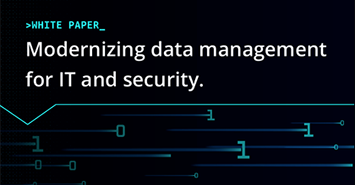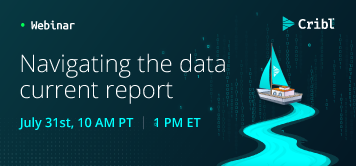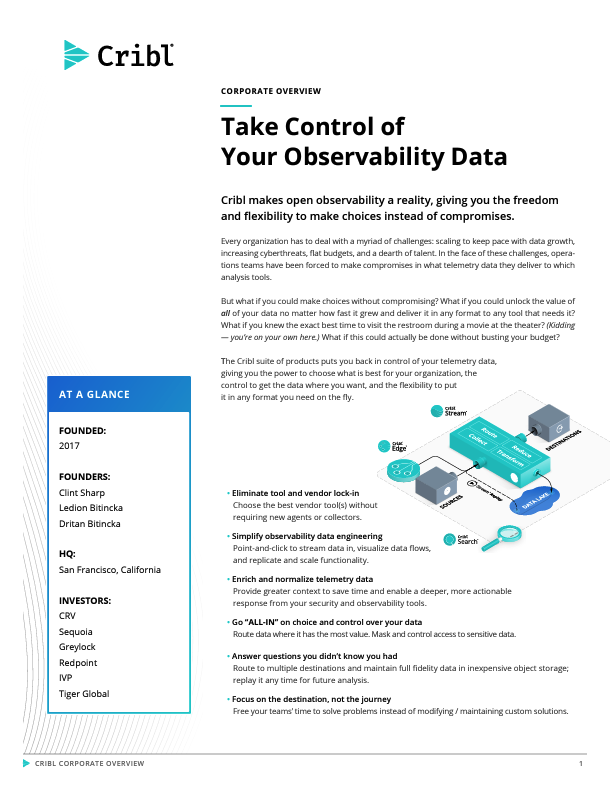Solutions › By industry › AIOps
AIOps
Efficiency so fine, it borders on supernatural.
Cribl helps AIOps gain control and choice while automating monitoring and diagnostic tools.
Cribl puts your IT and Security data at the center of your data management strategy and provides a one-stop shop for analyzing, collecting, processing, and routing it all at any scale. Try the Cribl suite of products and start building your data engine today!
Learn more ›
Evolving demands placed on IT and Security teams are driving a new architecture for how observability data is captured, curated, and queried. This new architecture provides flexibility and control while managing the costs of increasing data volumes.
Read white paper ›Cribl Stream is a vendor-agnostic observability pipeline that gives you the flexibility to collect, reduce, enrich, normalize, and route data from any source to any destination within your existing data infrastructure.
Learn more ›Cribl Edge provides an intelligent, highly scalable edge-based data collection system for logs, metrics, and application data.
Learn more ›Cribl Search turns the traditional search process on its head, allowing users to search data in place without having to collect/store first.
Learn more ›Cribl Lake is a turnkey data lake solution that takes just minutes to get up and running — no data expertise needed. Leverage open formats, unified security with rich access controls, and central access to all IT and security data.
Learn more ›The Cribl.Cloud platform gets you up and running fast without the hassle of running infrastructure.
Learn more ›Cribl.Cloud Solution Brief
The fastest and easiest way to realize the value of an observability ecosystem.
Read Solution Brief ›Cribl Copilot gets your deployments up and running in minutes, not weeks or months.
Learn more ›AppScope gives operators the visibility they need into application behavior, metrics and events with no configuration and no agent required.
Learn more ›Explore Cribl’s Solutions by Use Cases:
Explore Cribl’s Solutions by Integrations:
Explore Cribl’s Solutions by Industry:

July 31 | 10am PT / 1pm ET
Navigating the Data Current Report: Transforming IT & Security Operations in 2024
Register ›
Try Your Own Cribl Sandbox
Experience a full version of Cribl Stream and Cribl Edge in the cloud.
Launch Now ›Get inspired by how our customers are innovating IT, security and observability. They inspire us daily!
Read Customer Stories ›
Sally Beauty Holdings
Sally Beauty Swaps LogStash and Syslog-ng with Cribl.Cloud for a Resilient Security and Observability Pipeline
Read Case Study ›
Experience a full version of Cribl Stream and Cribl Edge in the cloud.
Launch Now ›Transform data management with Cribl, the Data Engine for IT and Security
Learn More ›
Cribl Corporate Overview
Cribl makes open observability a reality, giving you the freedom and flexibility to make choices instead of compromises.
Get the Guide ›Stay up to date on all things Cribl and observability.
Visit the Newsroom ›Cribl’s leadership team has built and launched category-defining products for some of the most innovative companies in the technology sector, and is supported by the world’s most elite investors.
Meet our Leaders ›Join the Cribl herd! The smartest, funniest, most passionate goats you’ll ever meet.
Learn More ›Whether you’re just getting started or scaling up, the Cribl for Startups program gives you the tools and resources your company needs to be successful at every stage.
Learn More ›Want to learn more about Cribl from our sales experts? Send us your contact information and we’ll be in touch.
Talk to an Expert ›AIOps applies machine learning over large amounts of operational data to automate IT operations, including event correlation, anomaly detection, and causality determination. IT teams are exploring AIOps for several reasons, like reducing alert fatigue, proactively detecting performance problems, and avoiding outages. Many of those teams are searching for an all-in-one AIOps solution that does it all. The challenge these teams face isn’t with the predictive algorithms and models. Instead, their challenges are more practical concerns around collecting, normalizing, and routing data to the right places.
AIOps tools need the flexibility to ingest and index data from many sources. These include infrastructure, networks, applications, a range of monitoring tools, and deployed software agents. All data from these diverse sources must be normalized before it can be used for either real-time analytics over data in flight or for historical analysis over larger datasets at rest. Successfully deploying AIOps into the enterprise means managing three core constraints: volume, accuracy, and precision.
I’ve never had this kind of visibility. I get a daily health report, I can see all the data sources are up, and how they’re doing. We’ve never had this level of insight into data stream status. We can just redirect any traffic where it needs to go. Usability has never been this good for a data product before.
Sr. Director of IT
Fortune 50 Firm
USE CASES
Reduce as much as 50% of ingested operational data, delivering higher accuracy data to AIOps platforms. Easily eliminate duplicate fields, null values, and any elements of machine or security that provide little value to downstream AIOps models – and control infrastructure costs along the way.
The ability to scale teams can only happen with automation. Freeing teams from the mundane and repetitive tasks, teams can focus on more strategic initiatives. Automation tooling can proactively help security teams handle an increasing number of security threats and vulnerabilities more effectively, without overburdening the existing staff.
CRIBL WORKS WITH:
Get logs, metrics, and traces from any source to any destination. Cribl consistently adds new integrations so you can continue to route your data to and from even more sources and destinations in your toolkit. Check out our integrations page for the complete list.

RESOURCES
Classic choice. Sadly, our website is designed for all modern supported browsers like Edge, Chrome, Firefox, and Safari
Got one of those handy?
